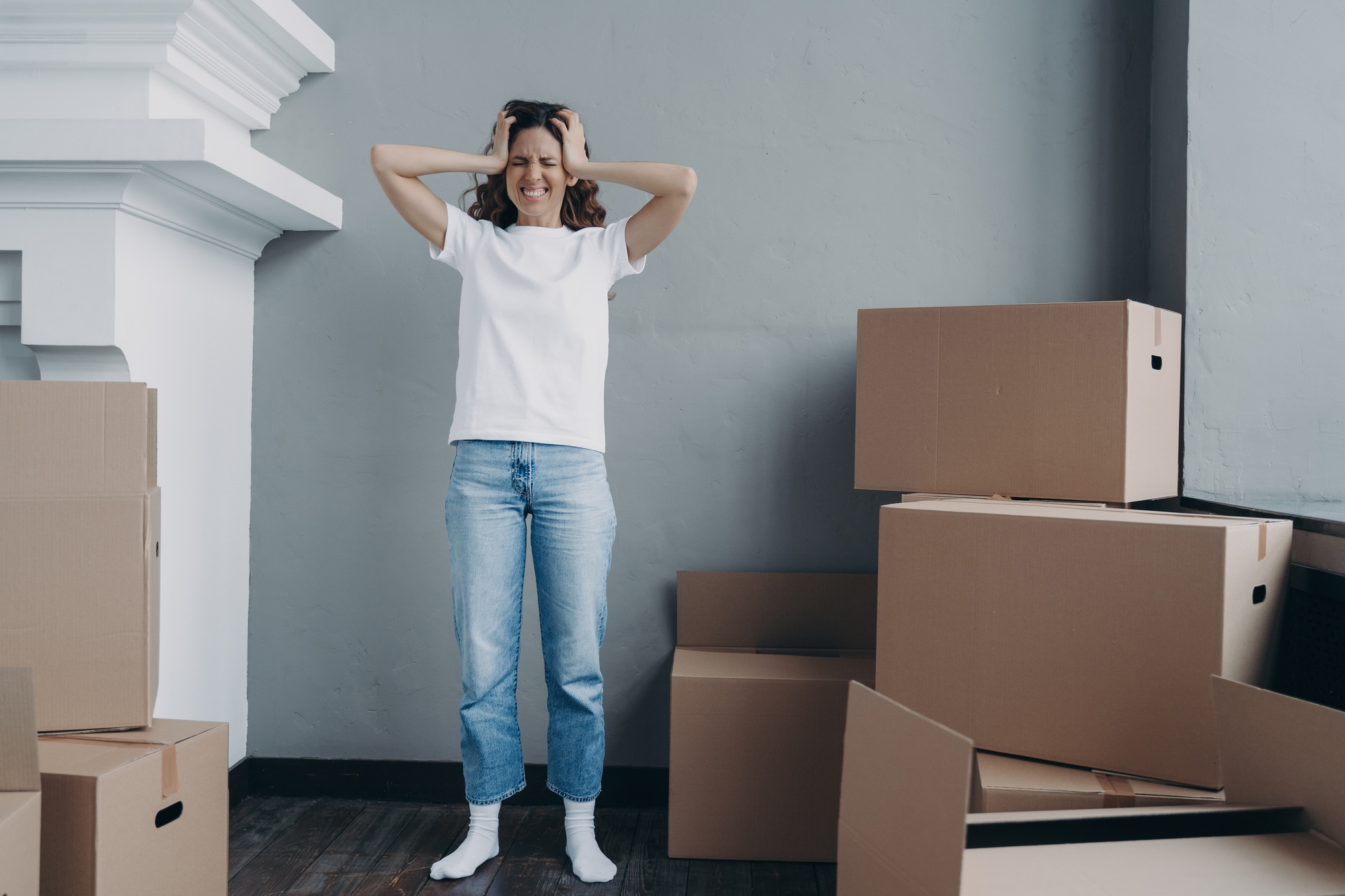Top Strategies to Ease Relocation Stress for a Smooth Move
Moving to a new home can be an exciting but also daunting experience. The process of packing, organizing, and relocating all your belongings can quickly become overwhelming without the right strategies. Here are some top tips to help you navigate this process with ease and reduce the associated stress.
Plan Ahead
Planning is the cornerstone of a stress-free move. Starting early allows you to tackle each stage of the move without rushing, which can help minimize anxiety and avoid last-minute panic.
This might interest you : Managing relocation stress: tips for a seamless transition
Create a Moving Checklist
A comprehensive moving checklist is essential for staying organized throughout the moving process. Break down tasks by week and include everything from booking a moving company to packing specific rooms. Here’s a sample timeline:
- Two months before the move: Start decluttering and packing non-essential items.
- One month before the move: Book movers, order packing supplies, and continue packing.
- One week before the move: Pack essential items and confirm all logistics4.
Having a clear timeline will help you stay on track and ensure that nothing is overlooked.
Also to see : Essential Local Permits You’ll Need When Relocating to Central London: A Comprehensive Guide
Notify Important Parties
Notify important parties about your move well in advance. This includes the post office, your bank, utilities, and any subscription services you use. Update your address with government agencies, such as the DMV and IRS, and make arrangements for forwarding your mail to your new address. This step is crucial to avoid disruptions during the transition\1\25.
Declutter and Downsize
Moving is an excellent opportunity to declutter your belongings. Go through your items and decide what to keep, donate, or sell. Here are some tips to help you declutter effectively:
- Evaluate Each Item: Ask yourself if you use the item regularly, if it is broken or worn out, or if it holds sentimental value.
- Use the One-Year Rule: If you haven’t used an item in the past year, chances are you won’t miss it.
- Consider Donating or Selling: Donate items that are still in good condition or sell items that have value. This will not only reduce the number of items to move but also help you start fresh in your new home\2\45.
Gather Packing Supplies
Having the right packing supplies is essential to ensure your belongings are protected during the move. Here’s a list of what you’ll need:
- Sturdy Boxes: Different sizes for various items.
- Packing Tape: To secure boxes.
- Bubble Wrap: To protect fragile items.
- Packing Paper: To fill empty spaces in boxes.
- Markers: For labeling boxes.
Investing in quality packing supplies will help prevent unnecessary delays and damage during the packing process\1\35.
Label Everything
Labeling your boxes is crucial for making unpacking a breeze. Here’s how you can do it effectively:
- Clearly Mark Contents: Label each box with its contents and the room it belongs to in your new home.
- Use Color-Coded Labels: Use different colors for different rooms to make unpacking more organized.
- Number Boxes: Use a numbering system to keep track of your boxes and prioritize which ones to unpack first\1\23.
Pack Strategically
Packing can be one of the most time-consuming aspects of moving, but it doesn’t have to be stressful if you approach it strategically. Here are some tips:
- Start with Non-Essentials: Begin packing items you use infrequently and gradually work your way to daily essentials.
- Use Soft Items for Cushioning: Use items like blankets, towels, and clothing to cushion fragile items.
- Wrap Fragile Items Carefully: Use bubble wrap or packing paper to protect fragile items.
- Fill Empty Spaces: Fill empty spaces in boxes to prevent shifting during transit\1\23.
Hire Professional Movers
Hiring professional movers can make the entire moving process more manageable and efficient. Here are some reasons why you might consider hiring professionals:
- Experience and Equipment: Professional movers have the experience and equipment to handle your belongings safely and efficiently.
- Time and Stress Savings: Hiring professionals can save you significant time and reduce the stress associated with moving.
- Full-Service Moving: Consider opting for a full-service moving company that can pack, load, and even unpack your belongings\1\35.
How to Choose the Right Movers
When hiring professional movers, here are some steps to follow:
- Get Multiple Quotes: Shop around and compare moving companies to ensure you’re getting a fair price.
- Read Reviews: Check online reviews and ask for recommendations from friends or family.
- Check Credentials: Ensure the moving company is licensed and insured4.
Pack an Essentials Box
Packing an essentials box can make your first day and night in your new home much easier. Here’s what you should include in this box:
- Toiletries: Toothbrush, toothpaste, soap, etc.
- A Change of Clothes: For each family member.
- Basic Kitchen Supplies: Plates, cups, utensils, a can opener.
- Important Documents: ID, passport, medical records.
- Chargers and Electronics: Phone chargers, laptops, etc.
Having these essentials readily available will prevent you from having to search through boxes when you’re tired from the move\1\24.
Take Care of Your Utilities
Transferring utilities is a critical step in the moving process. Here’s what you need to do:
- Schedule Disconnection: Schedule the disconnection of utilities at your old home.
- Schedule Connection: Schedule the connection of utilities at your new home well in advance.
- Ensure Setup: Ensure that everything is set up and functioning before moving day\1\25.
Stay Organized on Moving Day
Moving day can be chaotic, but with a clear plan, you can make it go smoothly. Here are some tips:
- Keep Your Checklist Handy: Have your moving checklist handy to ensure everything is done.
- Communicate with Movers: Be on hand to answer any questions and provide guidance on where to place items in your new home.
- Prepare for Pets and Children: Make sure pets and children are safely situated away from the hustle and bustle of moving activities to reduce stress for everyone involved\1\35.
Take Care of Yourself During the Move
Taking care of yourself is crucial during the moving process. Here are some tips to help you manage stress and maintain energy levels:
- Get Plenty of Rest: Make sure to get adequate rest in the days leading up to your move.
- Stay Hydrated and Eat Well: Keep healthy snacks and water nearby as you pack and coordinate the move.
- Enjoy the Process: Try to enjoy the process by focusing on the positive aspects of your move, such as meeting new neighbors and exploring your new community2.
Practical Tips and Tricks
Here are some additional practical tips and tricks to make your move even smoother:
Use Suitcases for Heavy Items
- Utilize Suitcases: Use suitcases for packing heavier items like books, shoes, or toiletries. They are designed to carry weight and already have wheels, which can make transporting them easier4.
Prepare Your New Home
- Clean and Set Up Utilities: Clean each room and set up utilities before moving your items in. Arrange for any necessary repairs before moving in.
- Prioritize Unpacking: Focus on unpacking essential spaces like the kitchen, bathroom, and bedrooms first. Start by unpacking the items you’ll use right away4.
Table: Comparing Key Moving Strategies
| Strategy | Description | Benefits |
|---|---|---|
| Plan Ahead | Create a detailed moving checklist and timeline. | Reduces stress, ensures organization, and avoids last-minute panic. |
| Declutter and Downsize | Evaluate and get rid of items you no longer need. | Reduces the volume of items to move, saves time and money. |
| Gather Packing Supplies | Stock up on necessary packing materials. | Prevents delays and damage during the packing process. |
| Label Everything | Clearly mark boxes with contents and room assignments. | Makes unpacking more organized and efficient. |
| Pack Strategically | Start with non-essentials and use soft items for cushioning. | Ensures safe transportation of belongings. |
| Hire Professional Movers | Consider hiring professionals for a stress-free move. | Saves time, reduces stress, and ensures safe handling of belongings. |
| Pack an Essentials Box | Include essential items for immediate use. | Makes the first day in the new home more comfortable. |
| Take Care of Your Utilities | Schedule utility disconnections and connections. | Ensures everything is set up and functioning before moving day. |
| Stay Organized on Moving Day | Keep a checklist handy and communicate with movers. | Makes moving day more efficient and less chaotic. |
| Take Care of Yourself | Get plenty of rest, stay hydrated, and eat well. | Helps manage stress and maintain energy levels. |
Quotes from Moving Experts
- “Moving doesn’t have to be a stressful experience. By following these ten strategies, you can make your move go much smoother and more efficiently.” – Two Men and a Truck1
- “Moving is often seen as a stressful life event, but it can also be an exciting opportunity for a fresh start. Try to enjoy the process by focusing on the positive aspects of your move.” – Carmenate / Duchon2
- “A stress-free residential move is possible with proper planning, organization, and the help of professional movers like Macho Movers.” – Macho Movers3
By following these strategies and tips, you can significantly reduce the stress associated with moving and ensure a smooth transition to your new home. Remember, planning ahead, decluttering, and hiring professional movers are just a few of the steps you can take to make your move as stress-free as possible.
For more detailed advice on managing relocation stress, you can visit this resource for additional tips and tricks.











